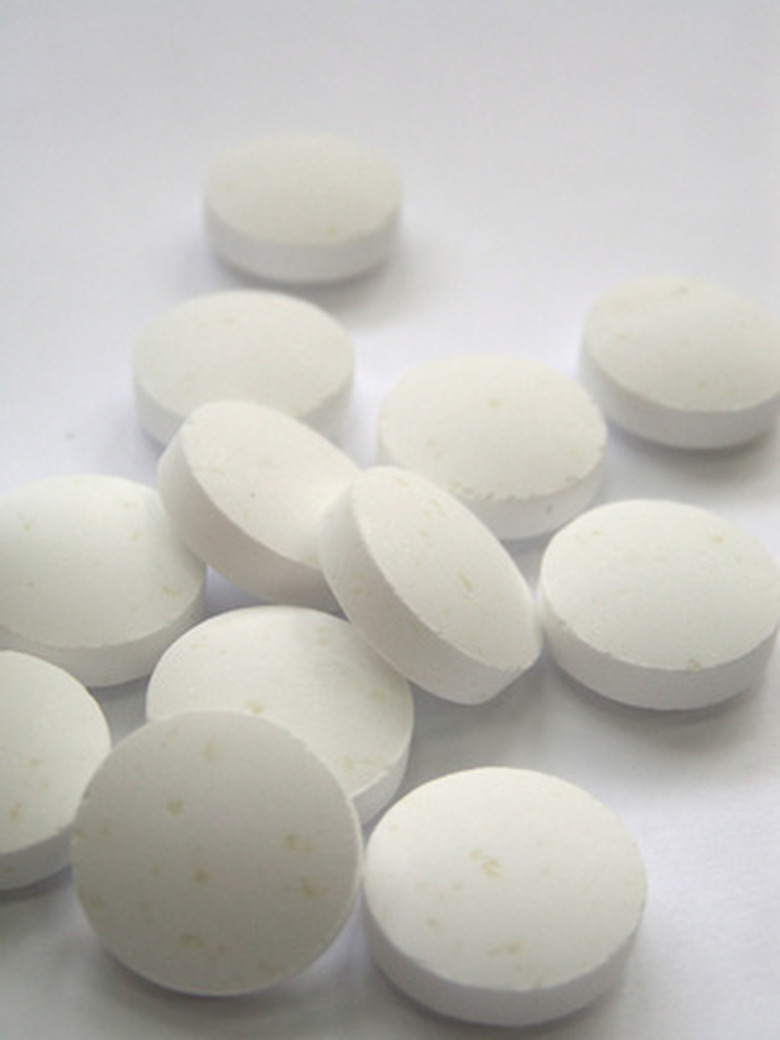Crushed Calcium Vitamins For A Vegetable Garden
There's more to fertilizing your garden than N-P-K. Calcium, too, is essential to a healthy garden soil. Store-bought agricultural lime is one calcium-rich soil additive. Eggshells from your daily morning omelet is another. But have you thought about what's in your medicine cabinet? The same calcium supplements you take for healthy bones and teeth can help maintain your plants' vigorous growth.
Plants Need Calcium
Calcium is one of the six macronutrients needed in large amounts for healthy plant growth. It's important for plant growth at the cellular level, and its presence or absence determines to a great extent the ability of the plant to process other macronutrients.
- There's more to fertilizing your garden than N-P-K. Calcium, too, is essential to a healthy garden soil.
Plants consume calcium from the soil at a rapid rate, so you'll need to replenish the calcium periodically through the season. Watch for signs of calcium deficiency: yellow leaves that curl at the edges, stunted plant growth and blackened shoots. Calcium deficiency first shows in new growth but will spread to older leaves if deficiency persists. If your potatoes won't get plump, if your beets tend to fork, if your cabbage leaves develop brown tips or if your tomatoes' and peppers' blossom ends start to rot, it may be a sign you need to add calcium to the soil.
Liming the Soil
For large-scale crops, farmers lime their fields to sweeten the soil (raise its pH) and to add calcium. "Lime" is a generic term which could refer to one of several products. Quicklime, or calcium oxide, is one of these. It's fast-acting but can damage plants easily with overuse. Another form of liming, one that's safer but slower to take effect, is the use of ground limestone, called agricultural lime ("aglime"). Chemically, it's calcium carbonate.
- Plants consume calcium from the soil at a rapid rate, so you'll need to replenish the calcium periodically through the season.
- Another form of liming, one that's safer but slower to take effect, is the use of ground limestone, called agricultural lime ("aglime").
Effects of Calcium Tablets
Calcium supplements come in different molecular combinations for human consumption. One of these is calcium carbonate. As you might expect, crushed calcium carbonate tablets will have a similar effect to adding agricultural lime. It may have an unwanted additional effect on your budget, however; calcium supplements aren't cheap. But if you stop taking calcium supplements and find yourself with a lot of leftover tablets, try feeding them to your plants.
Your medicine cabinet may contain another potential source of calcium carbonate for your garden: antacid tablets.
Best Practice
Adding calcium carbonate tablets is a good way to help condition the soil before planting, and adding them in small amounts throughout the season can help maintain calcium levels in the soil. Calcium tablets (and egg shells) can also help if you're seeing blossom end rot or other symptoms of calcium deficiency in a few of your plants. But if the symptoms are widespread or advanced to the point of affecting older growth, you'll stand a better chance saving your garden with a cautious application of quicklime.
- Calcium supplements come in different molecular combinations for human consumption.
- Calcium tablets (and egg shells) can also help if you're seeing blossom end rot or other symptoms of calcium deficiency in a few of your plants.
Be Careful
Note that blossom end rot may not indicate a lack of calcium in the soil at all, but instead an inability of the plant to transport calcium to its cells. In this case, liming the soil won't help.
Note also that peppers prefer an acidic (low pH) soil, and adding calcium carbonate in any form raises the pH. A pH-lowering calcium additive is to gypsum, or calcium sulfate dihydrate.
Additionally, adding too much calcium can off-balance the soil's calcium/magnesium ratio. A ratio of 68 to 12 is ideal.
In all cases it's best to perform a soil test before adding supplements that might alter pH levels or the calcium/magnesium ratio.
- Note that blossom end rot may not indicate a lack of calcium in the soil at all, but instead an inability of the plant to transport calcium to its cells.
- Note also that peppers prefer an acidic (low pH) soil, and adding calcium carbonate in any form raises the pH.
- A pH-lowering calcium additive is to gypsum, or calcium sulfate dihydrate.
